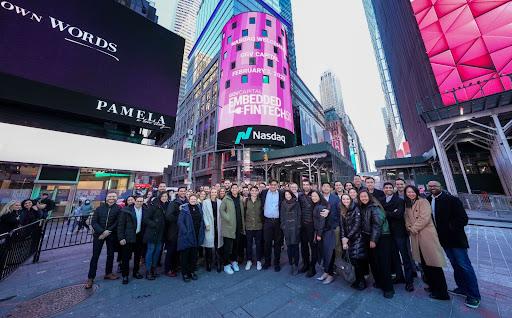Financial services are fundamental enablers of commerce. With more than 25 global fintech investments under our belt since 2011, we believe the next wave of fintech innovation will be marked by embedded fintech — financial services integrating into the flow of commerce right at the source of where transactions are happening.
Here at GGV, we’re already seeing fintechs that embed themselves into commercial platforms to distribute financial services will benefit from lower customer acquisition costs and increased trust with customers through partnerships with larger-platform brand names.
We’ve also seen that the most successful fintechs typically build a stellar in-house core product and then embed more features and products to best serve the customer. In the years ahead, we predict that more fintech companies will follow this model and strive to become a financial operating system for the customers they serve.
What’s fueling fintech innovation
The rise of embedded fintech reflects our excitement about three major trends:
- Democratization of access to technology: As more transactions happen online, consumers and businesses benefit.
- Real-time data: Embedded fintech leverages real-time data to build models that can control better risk management and offer better solutions for more users.
- Global opportunities: With so much more digitalization on the horizon (especially in emerging markets), we expect that fintech will continue to penetrate financial services market share and even define new markets.
While public fintech valuations have more than halved over the past year, it’s important to understand the full scope of the market opportunity for fintech innovation over the next decade:
- The market cap of publicly traded fintech companies accounts for $650 billion, which is approximately 5% of the $14 trillion market cap of public financial services companies.
- We believe that new fintech innovators will emerge to take a larger slice of this pie.
So what will it take to become a financial OS?
For starters, leveraging embedded fintech (or building in-house) can provide a range of financial services — including checking, lending, payments, business intelligence, financial software and more — all within one platform.
These days, fintechs can turn to other companies that are already creating these specialized solutions. By partnering with these companies, it’s faster for fintechs to deliver more complete products without having to build their own.
Whether it’s through building in-house products or cultivating win-win partnerships, becoming an all-in-one financial platform allows fintech companies to:
- Account for a greater share of the customer wallet
- Increase customer stickiness: Public tech platforms such as Square*, Shopify and DoorDash have focused their fintech expansion efforts around embedded lending to increase customer stickiness — Square offers Square Capital, Shopify offers Shopify Capital, and DoorDash offers DoorDash Capital (powered by Parafin).
- Eventually expand gross margins to prepare for a blockbuster IPO: In this ever-evolving market environment, public investors now expect IPO candidates to demonstrate revenue predictability, sustainable growth and a path to profitability.
The road ahead for fintech innovation
As the Fed raises interest rates to help tame inflation in the U.S., default rates are likely to increase, which will affect lending businesses more acutely. Given the premium now being placed on “SaaS-like” business models, we believe that platforms should first strive to become an operating system of the customers they serve. Only then are these companies ready to layer on recurring software fees (such as subscriptions for business intelligence, budgeting or financial forecasting software) that can expand margins and increase revenue predictability.
We’ve seen this playbook both outside and within the GGV portfolio:
- Amazon: Stemming from its origins as a pure e-commerce marketplace, Amazon now offers a variety of fintech “merchant services” including payments (Amazon Pay), lending (Amazon Lending/Merchant Cash Advance), checking (Amazon Seller) and even logistics (Fulfillment by Amazon).
- Shopify:With a main product of e-commerce software that’s similar to Amazon, Shopify has now diversified into offering payments (Shopify Payments), BNPL (powered by Affirm*), lending (Shopify Capital) and checking (Shopify Balance).
- Novo*: Whileits primary product is a checking account and business debit card, Novo envisions becoming a central OS for SMBs in the U.S. by offering loans and ecosystem integrations.
- Clara*: Its main product is a corporate credit card, with a vision to become the financial OS for the CFO at mid-market and enterprise businesses across Latin America.
Introducing the Embedded Fintech 50
To celebrate the rising stars in embedded fintech, GGV Capital — in partnership with Crunchbase — recently unveiled the inaugural Embedded Fintech 50. More than 175 embedded fintech companies were nominated by 57 investment firms, including GGV.
From more established companies like Stripe to financial wellness startups like Northstar,* it’s exciting to see how the 50 honorees are each democratizing access to financial services through technology. Having raised more than $12 billion collectively, the Embedded Fintech 50 also demonstrates the enthusiasm of venture capital investors in the growth and innovation of this sector:
- Half of the honorees are early-stage Series A or B companies that have raised less than $100 million.
- Fifteen honorees are mid-stage companies that have raised $100 million to $250 million.
- Ten honorees are late-stage companies that have raised more than $250 million.
- Diverse founders, including woman leaders, lead 40% of the companies from 10 cities across the U.S.
Even though we’re in the early innings of global financial service digitalization with many more large fintechs yet to be built, embedded fintech is a bright spot in today’s market. We can’t wait to see what’s next from these 50 forward-looking innovators as we continue to support the development and innovation of the embedded fintech landscape. Check out the list: www.embeddedfintech50.com.

The bottom line: As more fintechs invest in product development and partnerships, these companies will transition their offerings from point solutions into all-in-one platforms that keep customers within the same ecosystem. From this will emerge more fintechs with diversified revenue streams, higher margins and loyal customers — all of which can set the stage for blockbuster IPOs two to three years from now.
*Represents a company in GGV’s portfolio
GGV Venture Partner Huey Lin and GGV VP of Technology Rares Crisan contributed to this article.
About the authors

Hans Tung
Managing Partner, GGV Capital
Hans Tung is a managing partner at GGV Capital, focusing on early-stage investments across the global digital economy ecosystem. He is consistently recognized among the top venture capital investors in the world, having been named to the Forbes Midas list 10 consecutive years from 2013-2022, most recently ranking No. 6. His portfolio includes 18 companies valued at more than $1 billion, including Affirm, Airbnb, Bowery Farming, Chief, StockX and StoriCard. Tung oversees GGV’s DE&I initiatives and is the co-host of the popular podcast, “Evolving for the Next Billion,” which covers entrepreneurship in the U.S., China, India, Southeast Asia and Latin America.

Robin Li
Investor, GGV Capital
Robin Li is based in New York and focuses on investments in consumer, fintech and digital economy for GGV Capital. She serves on the board of directors for Bustle Digital Group, Flieber, Glow Concept and Odeko. She is formerly a board director for Lively, which was acquired by Wacoal in 2019. She is also a board observer or actively involved with Bowery Farming, Chief, Frubana, Function of Beauty, Ibotta, K Health, Novo, Shelf Engine, Slice, Snappy Gifts, StockX, and Swimply.

Marcello Rossi
Investor, GGV Capital
Marcello Rossi is based in New York and focuses on investments in fintech and consumer for GGV Capital. He worked closely on some of GGV’s latest investments, including Clara, Idwall, JOKR, Novo, Northstar, Stori, and others.
Prior to GGV, Marcello was on the investment teams at DST Global and General Atlantic, and he worked in strategy/ops at Worldpay during the acquisition by FIS.
.svg)







